After arriving in Haa Valley on my seventh day in Bhutan, I immediately hit the ground running with an amazing Bhutanese lunch! Join me as I have some super tasty Bhutanese dumplings in Haa Valley and go on village tour in Haa, Bhutan!
My afternoon started outside the Pedlen Restaurant in the village of Haa. Haa Valley is one of the least-populated areas in Bhutan. I couldn’t wait to explore everything to see and do there! I’d start with lunch at the restaurant, go on a tour of the town, visit some shops, visit a monastery, and finish up with more dumplings at my hotel for dinner.

I was joined by my friend and guide Tsheten from MyBhutan, who told me the food is really good! This restaurant serves traditional Bhutanese cuisine in a cozy, rustic setting with lots of wood paneling. I had a huge feast with seven different dishes in front of me.
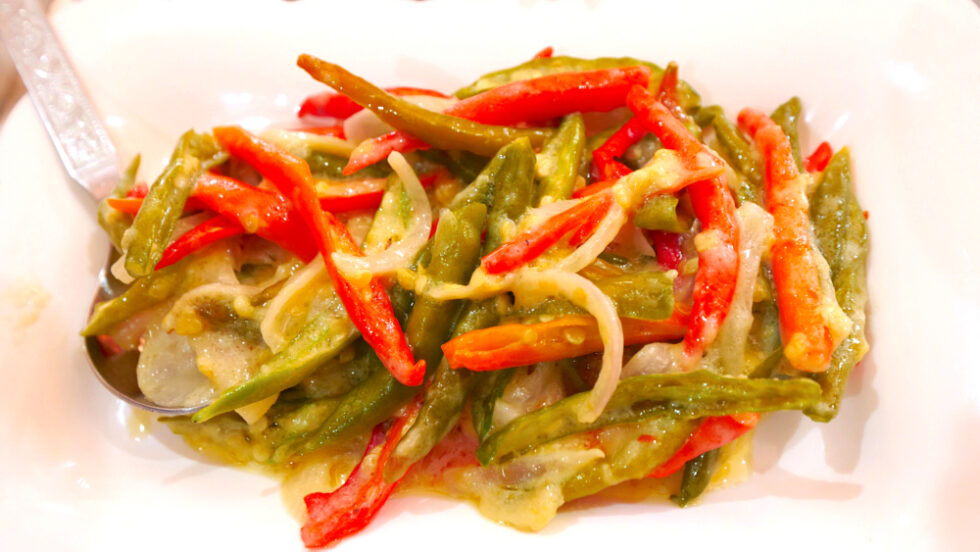
I started my Bhutanese dumplings lunch in Haa Valley, Bhutan with some chilies, potatoes, and beef; ema datshi with red and green chilies; radish with red chilies; a dumpling; and potato fritters. The ema datshi was super spicy. It hit me right away! It was both creamy and spicy and was fantastic. I needed some chai afterward to calm down the heat in my mouth! Next was a piece of moist beef with potatoes, which I really liked! The potato was mushy while the beef was tender with a bit of spice on it. It was perfect!
The radish was really nice in terms of spice. I tried it with some red chilies, which weren’t hot at all. Then, I tried another hotter chili. I followed that with some tomatoes, which I hadn’t had many of in Bhutan. They were nice, moist, and creamy and had some cheese in them.
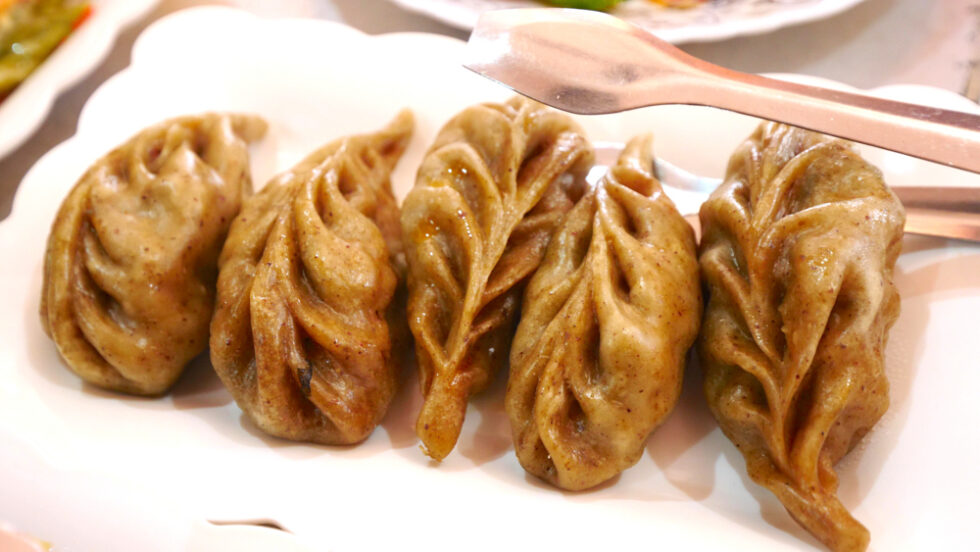
Next were the hoentay, or buckwheat dumplings with soft and delicate turnip greens inside. They originated from Haa Valley! The greens inside were delicious and tasted kind of like cabbage. The dumpling was a little more bitter than a regular dumpling. I added some ezay to add a little bit of numbing heat. They were my favorite dumplings of the trip so far!
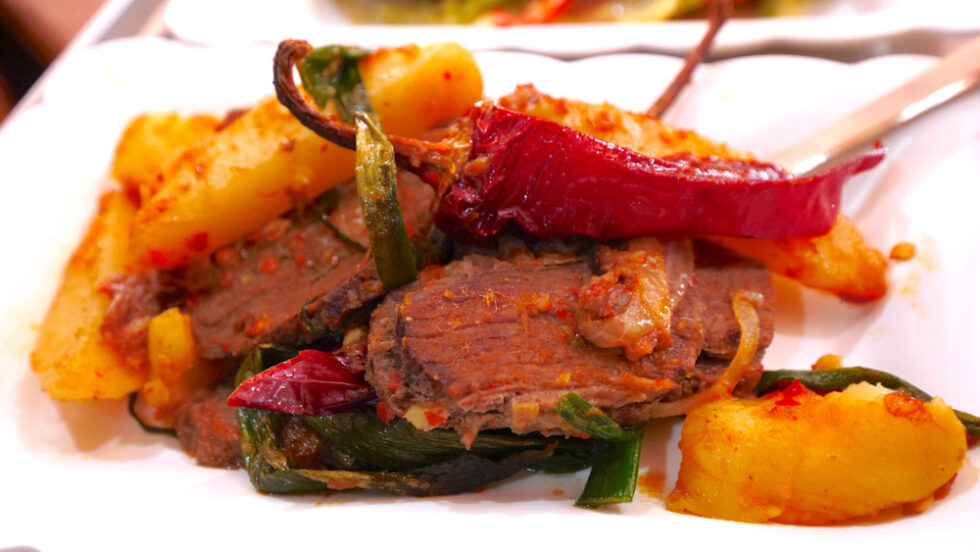
Then, I had some pink-tinted ara, which contained the bark of a tree and had an earthy flavor. Then, I had a potato fritter, which was a soft, fried potato ball with some spice! Then, I dug back into the ema dashti and dumplings. They were my two favorites and I loved them together! This was also my favorite ema dashti of the trip. It was just so creamy and spicy! Then, I finished with some papad and dal, which were exactly like they are in India.
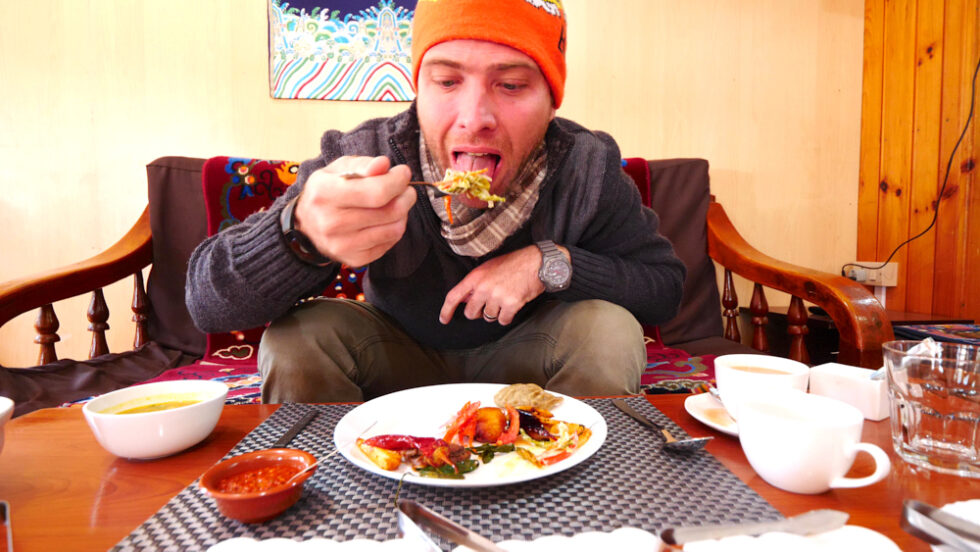
After my Bhutanese dumplings, it was time to explore Haa Valley, Bhutan! The population is only around 14,000 people. It’s known for having more shopkeepers than customers. The main part of town had three-story buildings on both sides of the road. On the bottom is a general store or shop, while the second level is a restaurant, and the top level is an apartment. They don’t own it, and everyone rents.
There’s also a vegetable market on the weekends. We passed some beautiful traditional houses and visited a general store. It’s a mini grocery store that sells snacks, water, soda, toys, gloves and more.
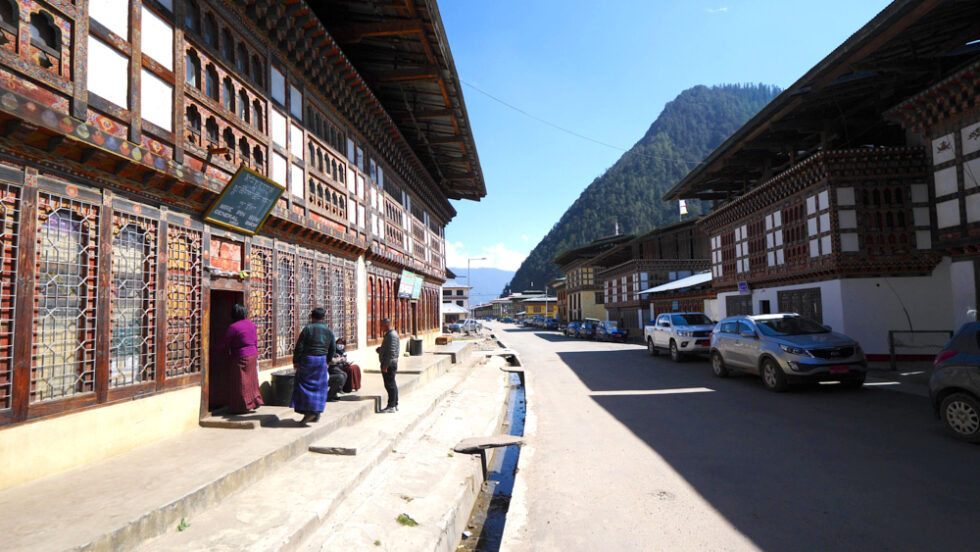
I loved the traditional architecture in the town. It’s a few centuries old. We visited another general shop, which only sold Buddhist items for the home or families. I saw some of the large darts I’d seen earlier in my trip. There were also some Buddhist wall hangings, Buddhas, cups, incense sticks, and ornaments. Most of the stuff there was either religious or pertaining to games. They also had carved keychains including tigers, dragons, and skulls. The skull fends off evil and cost 250 Nu/$3.31 USD.
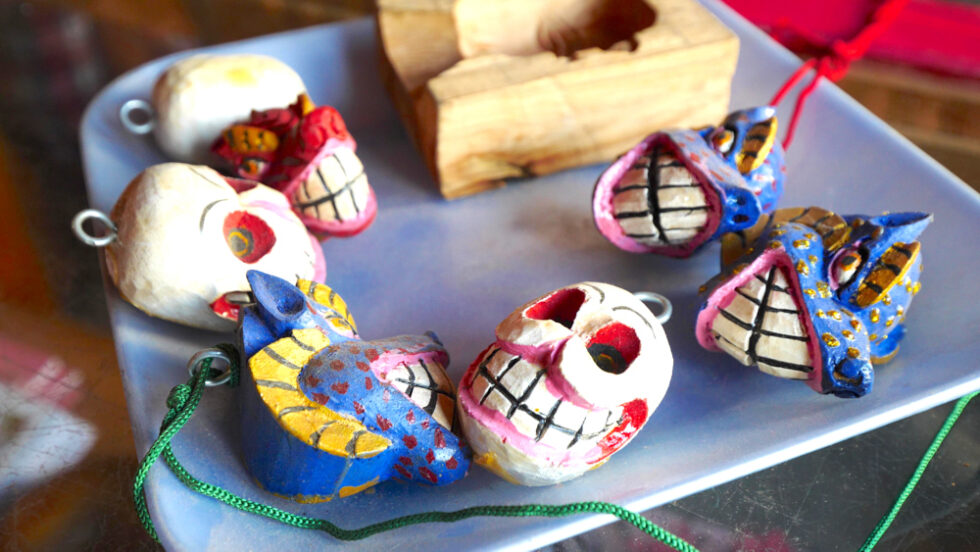
From there, we walked past more traditional houses. It was quite different from Punakha and Thimphu. The houses were all together along the main road. It was really cold and windy there, though! It was the coldest place we’d been so far. I was freezing!

We climbed a staircase up to a suspension bridge over the Haa Chhu River. Across the bridge, it was at least 10 degrees warmer. There, we saw a small Buddhist temple comprised of two buildings. There was also a prayer wheel and many white prayer flags. The white prayer flags are usually for a person who has passed away and represent the purification of karma. Families usually place 108 white prayer flags for one dead person. They only have prayers written on them, while the colored ones have images of gods and stupas on them in addition to text.
We walked along the Haa Chhu River. It was so cold! The river starts at Mount Jomolhari and flows all the way down to the Brahmaputra River in India. We finished hiking down the trail and made it to a road, where there’s a 9-hole golf course for the military. We passed by Haa Nature Park and the Fortress of Haa, which is now a military base. It was built in 1885.

There was a stupa we could walk through, which had a colorful ceiling. The wind was stronger on the other side. We continued toward the monastery, which is called the White Temple. It had a huge wall around it. I took off my hat to go inside. A Tibetan king heard a prophecy that he should build 108 temples. He chose Haa Valley to build two of them. He set a white pigeon and a black pigeon free and built the White Temple where the white pigeon landed. The black pigeon landed ten minutes away, which is where you’ll find the Black Temple.
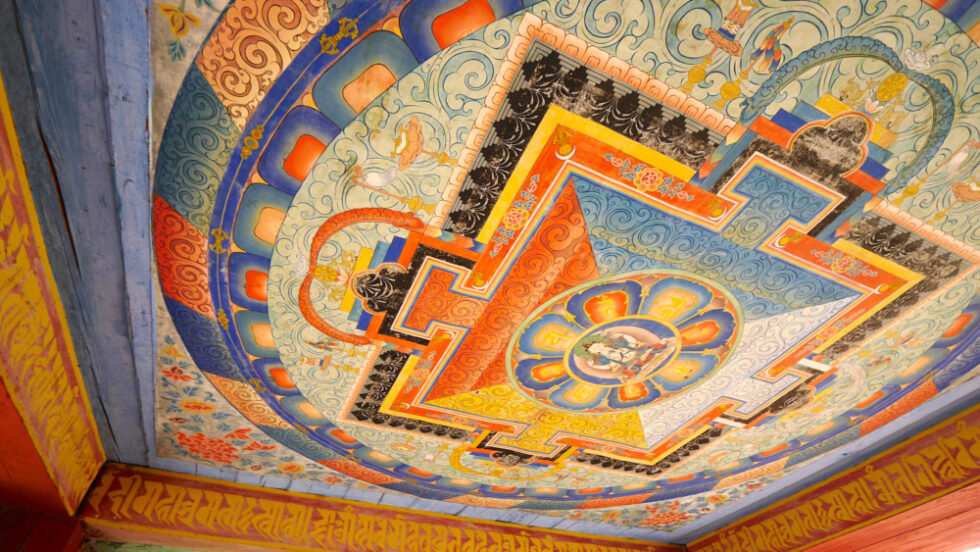
The White Temple was made up of several buildings and a massive courtyard. To the right and left are the monks’ residences, and at the very top is a temple with a statue of the god of longevity.

Then, we hiked past a herd of cows down a path toward the Black Temple. I took my hat off. It was much smaller than the White Temple. It had black-colored bricks on the bottom, and layers of red bricks and white bricks above the black ones.
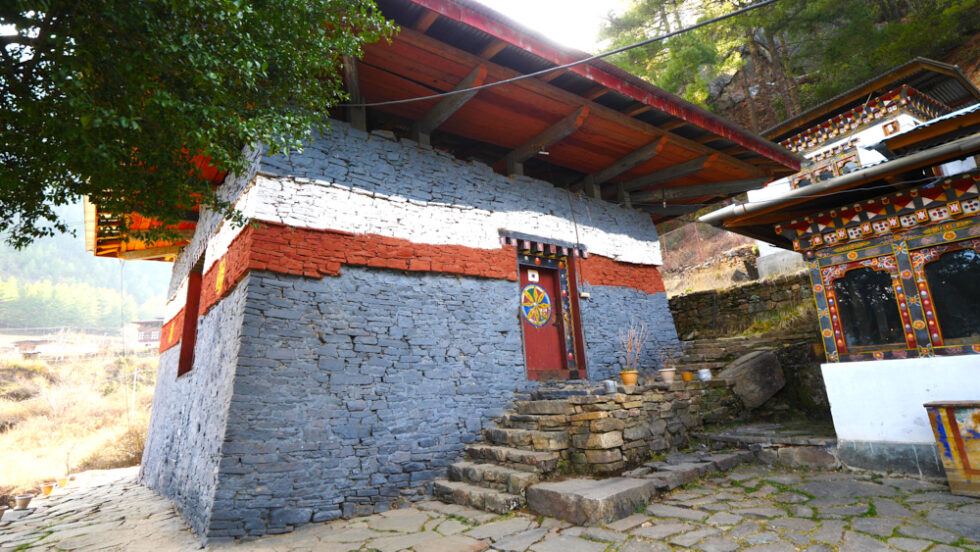
Inside are statues of the future Buddha, the second Buddha, and the Unifier. It is thought that the statue of the future Buddha has saved the locals from epidemics and famines. The grounds were beautiful!
Then, we hiked back down to the road and took our car back to town. It was a ten-minute drive from the White Temple to my hotel. We crossed a bridge and continued through farmland to Risum Resort, one of the best hotels in Haa Valley. They produce lots of apples here and export them to Bangladesh. They also produce wheat and buckwheat.
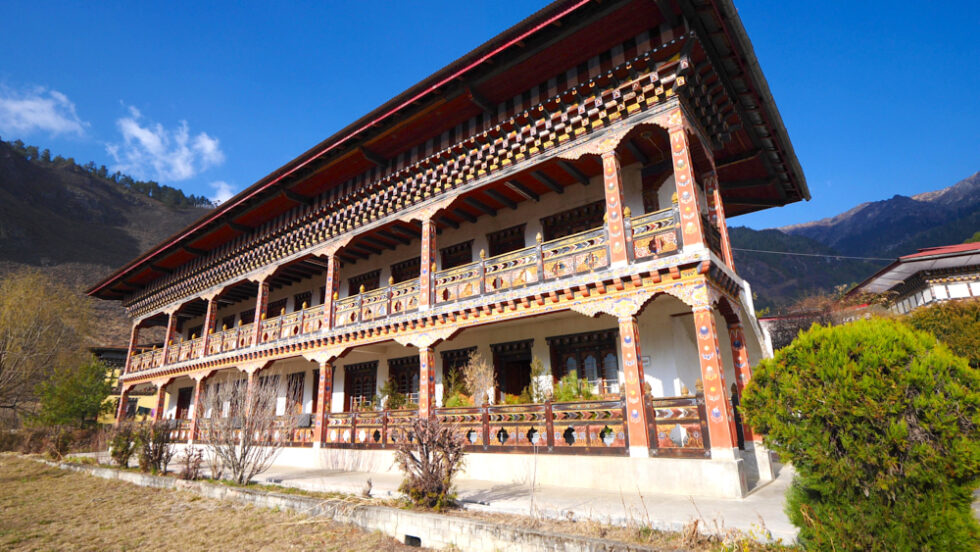
We arrived at the Risum Resort at about 4:30 in the afternoon. It had 14 rooms. I had number 13. It had a living room with two couches and a table. The whole thing was rustic and made of wood, including the ceilings, walls, and chairs. There was also a beautiful, spacious king-sized bed with a TV and a workstation. The bathroom as also really spacious and had a bathtub and a shower. There was also a hot water heater.
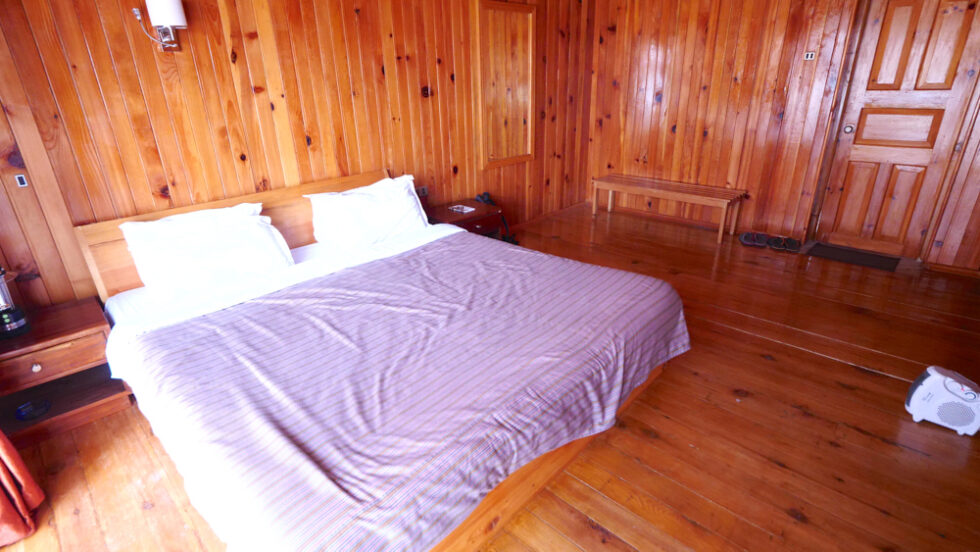
I took a quick nap and then headed to dinner at 6:30. It had gotten so cold by then! I headed to the dining hall, where Tshetens served me 10 fried hoentay dumplings, 10 steamed ones, ema datshi, chili paste, ara, and chai.
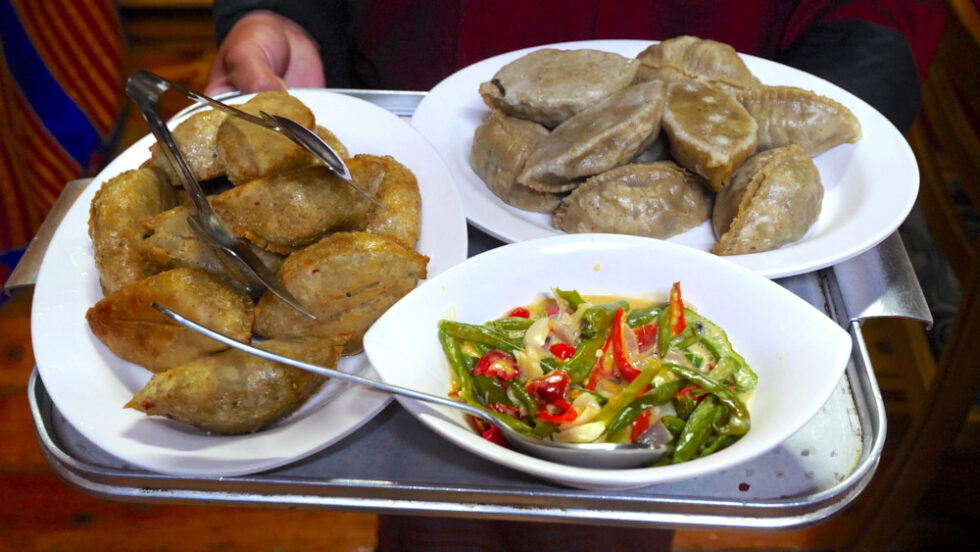
I tried a fried hoentay with the chili paste. It was oily, crunchy, and full of turnip leaves. It tasted like a fried empanada. The chili paste wasn’t that hot, though. The ema datshi was really cheesy and spicy but so good! The cheese was a little different as it was processed.
Then, I grabbed a steamed hoentay with no chilies. It was bigger than the ones I’d had earlier. I added some ema datshi to a large fried hoentay, which was so good. The fried ones were tastier, but I loved the steamed ones, too. They were right up there with the xiaolongbao I loved when I visited Shanghai. When you mix dumplings, vegetables, chilies, and cheese, you can’t go wrong! The ara was also delicious. It was super clear and flavorful. What an awesome day of Bhutanese food and adventures in Haa Valley, Bhutan!
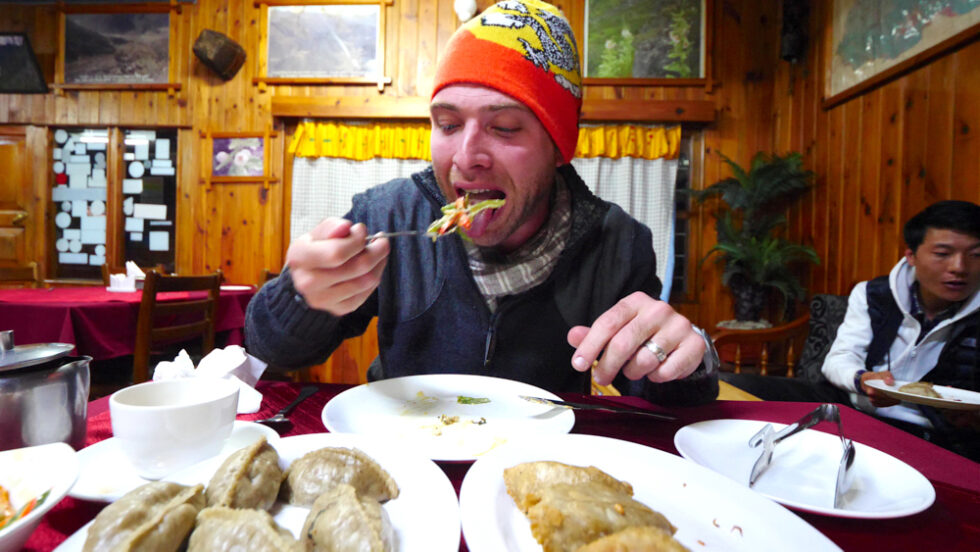
I hope you liked coming with me to have rare Bhutanese dumplings in Haa Valley, Bhutan! If you did, please give this video a thumbs up and leave a comment below. Also, please subscribe to my YouTube channel and click the notification bell so you don’t miss any of my travel/food adventures around the world!
Counter
101 Countries • 1432 Cities